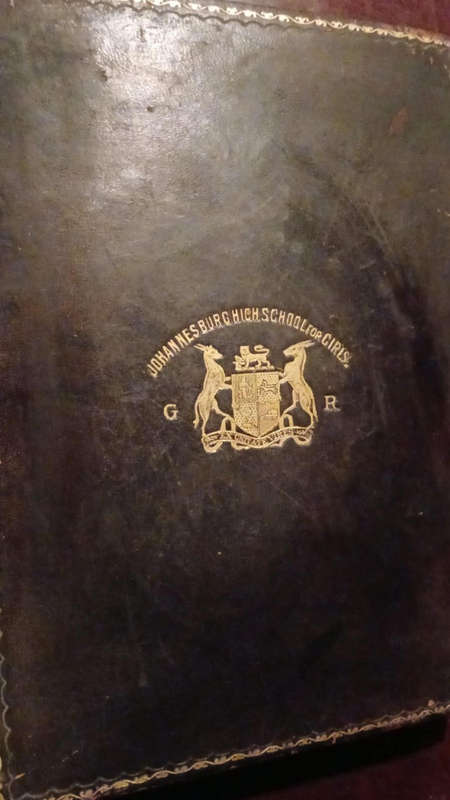The Golden Legend by Henry Wadsworth Longfellow
Published by Hodder & Stoughton, 1910, full leather binding, raised spine with morocco lettered label, School title & coat of arms in gilt to front board, gilt borders to covers & spine, marbled endpapers, prize plate, paste-down colour illustrations with tissue guards, gilt title page, 154 pages. 19.5 cms x 24 cms x 3.5 cms, condition: very good.
Johannesburg High School for Girls, Barnato Park, Prize plate dated 1912.
The book was published during the Golden Age of illustrated quality books in the Edwardian era. All plates by Sidney Meteyard, engraved and printed by Henry Stone.
"The Golden Legend" poem was first published in 1851, and is loosely based on the 13th century work of the same name.
Henry Wadsworth Longfellow was an American poet and educator. His original works include the poems "Paul Revere's Ride", The Song of Hiawatha, and Evangeline. He was the first American to completely translate Dante Alighieri's Divine Comedy and was one of the fireside poets from New England.
"The Golden Legend" is a narrative poem written during the mid-19th century. The poem unfolds stories of saints and legends from Christian traditions, echoing themes of faith, sacrifice, and the supernatural. It intricately weaves historical and mythical elements, with a central focus on characters like Prince Henry, whose life and struggles against despair and disease set the frame for the unfolding legends. The opening of the poem sets a dramatic tone with a prologue where Lucifer and the Powers of the Air attempt to topple a sanctified Cross, thwarted by Saints and Angels. Following this prologue is the introduction of Prince Henry, who is afflicted with a mysterious illness and finds himself in a restless state, longing for comfort and peace. He encounters Lucifer, disguised as a physician, who offers remedies that delve into dark temptations. As the narrative progresses, we see the interplay between Henry's despair and the legends of sacrifice and redemption, notably through his interaction with figures who explore deep existential themes. The dichotomy between light and darkness, along with the weight of sin and the promise of salvation, lays the foundation for the rest of the poem.





